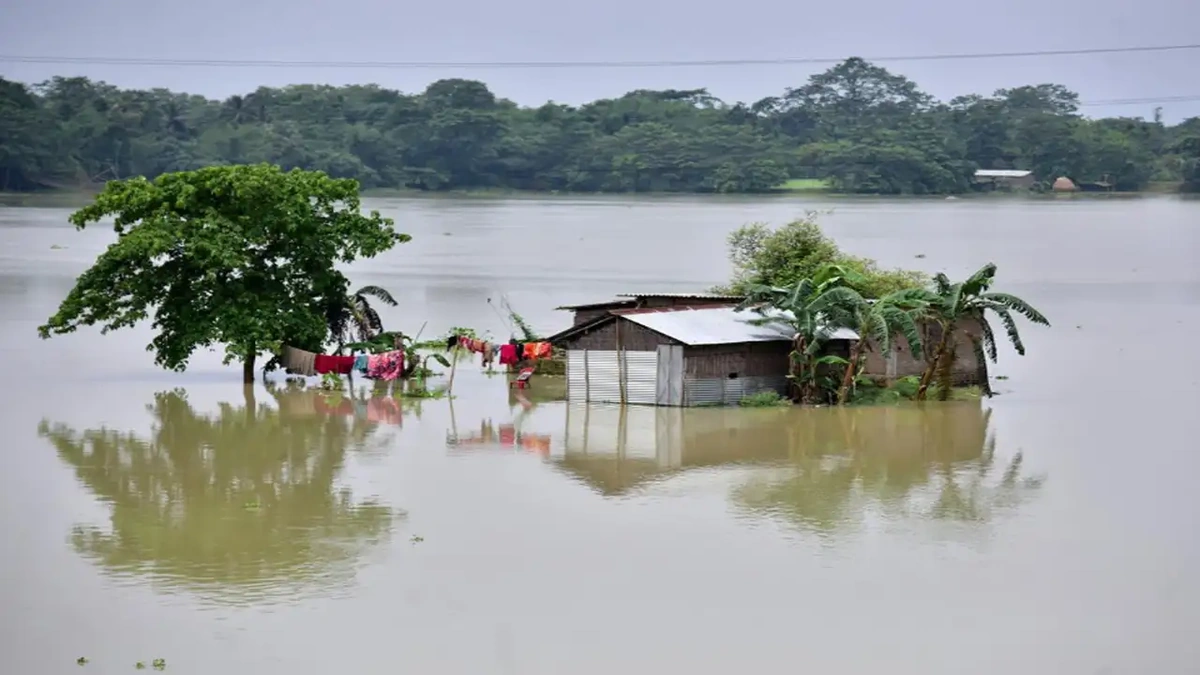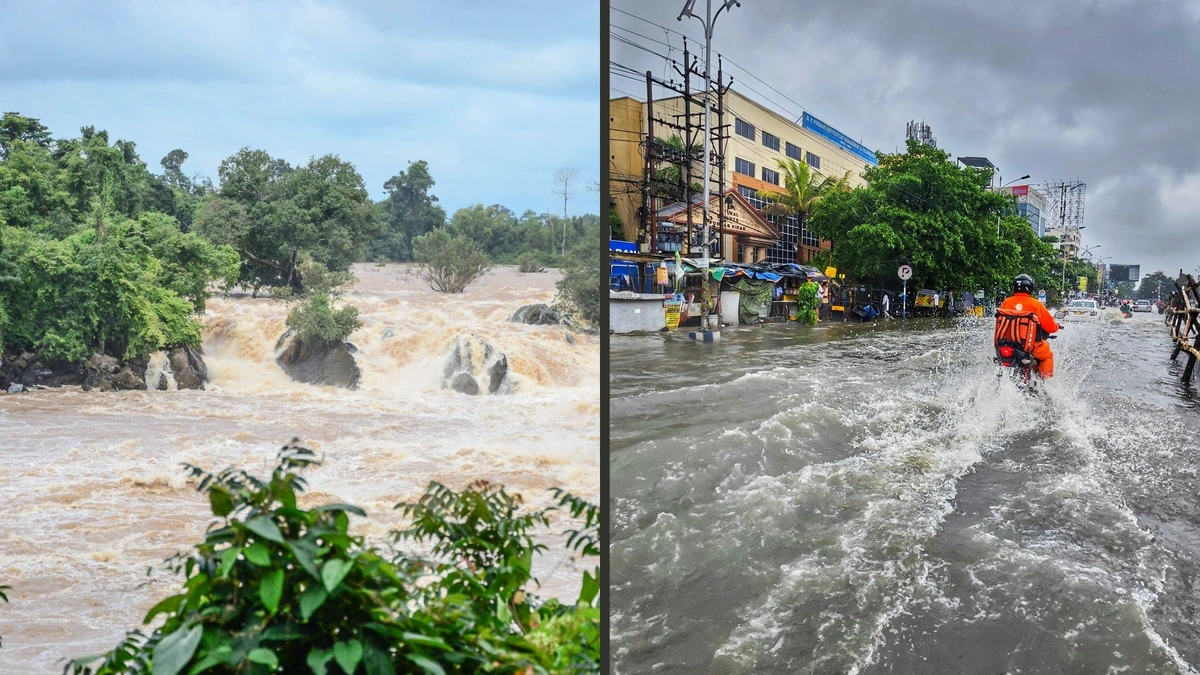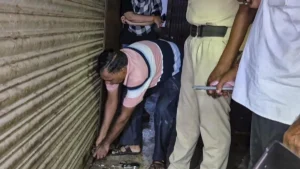Floods and Landslides in Darjeeling, India Claim 18 Lives After Heavy Rainfall
The news hit like a punch to the gut: floods and landslides in Darjeeling, claiming 18 lives after relentless heavy rainfall. But, let’s be honest, it’s more than just a news headline, isn’t it? It’s about lives disrupted, families shattered, and a community grappling with the sheer force of nature. And, if you’re anything like me, you’re probably wondering: why does this keep happening, and what can actually be done about it?
We’re not just going to rehash the news reports here. I want to dig deeper – to understand the “why” behind this tragedy. Let’s be real, natural disasters are devastating but often reveal underlying vulnerabilities in our systems, infrastructure, and even our approach to living in harmony with the environment. So, let’s unpack this, shall we?
The Climate Change Connection | Is This the New Normal?

Okay, let’s address the elephant in the room: climate change. It’s tempting to see these events as isolated incidents, but the science paints a clear picture. Rising global temperatures lead to more intense rainfall, and that’s exactly what the Darjeeling region experienced. What fascinates me is how seemingly small changes in global averages can trigger such catastrophic local events.
Think of it like this: the atmosphere is like a sponge, and it’s soaking up more moisture than ever before. When that sponge is squeezed – boom! Extreme rainfall. And, with the delicate Himalayan ecosystem already vulnerable, the consequences are amplified. Deforestation, which loosens the soil, only compounds the problem. It’s not just the rain; it’s how the land responds to it.
Now, according to several reports, heavy rainfall events are becoming more frequent. So, the big question becomes: are we prepared for this new normal? Are our disaster management systems up to the task? Because, if we don’t adapt, these tragedies will keep repeating themselves.
Unplanned Development | Building on Shifting Sands?
Here’s the thing: climate change isn’t the whole story. We need to look at how we’re developing the region. Unplanned construction, often without proper environmental impact assessments, plays a significant role. Buildings erected on unstable slopes become prime targets for landslides when the rains come down hard. A common mistake I see is thinking short-term gain trumps long-term sustainability.
Let me rephrase that for clarity: it’s about building responsibly. Ensuring that construction projects adhere to strict environmental regulations, taking into account the region’s geology and vulnerability to landslides. It’s about prioritizing safety and sustainability over quick profits. We need stricter enforcement of building codes and a greater emphasis on sustainable urban planning. The geological composition makes the region susceptible to landslide susceptibility . This requires an extensive analysis before any construction work.
And it’s not just about new construction. Existing infrastructure needs to be assessed and reinforced. Retaining walls, drainage systems, and slope stabilization measures are crucial. We need to invest in protecting what we already have, or risk losing it all. Color Psychology is just as important.
Community Resilience | A Ray of Hope Amidst Disaster
But amidst all the devastation, there’s always hope, right? What fascinates me is the resilience of the local communities in Darjeeling. The spirit of helping each other out, rebuilding homes, and supporting those who have lost loved ones. It’s a testament to the human spirit.
Local communities are often the first responders in these situations. They know the terrain, they understand the risks, and they’re often best placed to provide immediate assistance. Empowering these communities – providing them with training, resources, and early warning systems – is essential for building resilience.
For example, community-based disaster risk reduction programs can play a vital role. These programs educate people about the risks they face, how to prepare for disasters, and how to respond effectively. They also foster a sense of collective responsibility, ensuring that everyone is working together to protect their community. A more robust disaster management infrastructure can help better prepare for disasters.
The one thing you absolutely must remember is that building resilience is a long-term process. It requires sustained investment, collaboration between government agencies, NGOs, and local communities, and a commitment to learning from past experiences.
Early Warning Systems | Can Technology Save Lives?
Speaking of early warning systems, let’s be honest – they’re not always perfect. But they’re getting better. Sophisticated weather forecasting models, combined with real-time monitoring of rainfall and river levels, can provide valuable lead time, allowing people to evacuate before disaster strikes. As per the government reports, advanced weather forecasting and communication systems are a necessity in a region like Darjeeling.
But here’s the catch: an early warning system is only effective if people receive the warnings and act on them. That requires effective communication channels, community awareness campaigns, and clear evacuation plans. What’s the point of having a warning if nobody hears it or knows what to do?
Consider integrating mobile technology. Sending alerts directly to people’s phones can be a game-changer. But it needs to be accessible and understandable. Using local languages and simple messaging can ensure that everyone, regardless of their literacy level, can understand the warnings and take appropriate action. Let me rephrase that, the more robust the communication infrastructure is, the more lives that can be saved.
A Path Forward | Sustainable Solutions for a Vulnerable Region
So, where do we go from here? It’s clear that a multi-pronged approach is needed. We need to tackle climate change, promote sustainable development, empower local communities, and invest in early warning systems. But more than that, we need a fundamental shift in our mindset. We need to recognize that we are part of the environment, not separate from it. And that our actions have consequences.
What fascinates me is the potential for innovative solutions. Using technology to monitor landslide risk, developing climate-resilient infrastructure, and promoting eco-tourism can all contribute to a more sustainable future for Darjeeling. We can also create new sustainable solutions by researching the local vegetation to see which plants can help stabilize the land.
And it all starts with awareness. Educating people about the risks they face, empowering them to take action, and holding decision-makers accountable. Only then can we hope to build a future where tragedies like this are less frequent and less devastating.
The latest reports about the India floods highlight the urgency of the situation. And while the destruction from landslides is saddening, this is a time to act.
FAQ Section
Frequently Asked Questions
What are the main causes of floods and landslides in Darjeeling?
A combination of factors, including heavy rainfall (often exacerbated by climate change), unplanned development, deforestation, and the region’s fragile geology.
How can communities prepare for future floods and landslides?
By participating in community-based disaster risk reduction programs, understanding early warning systems, and supporting sustainable development initiatives.
What is the government doing to address the problem?
The government is investing in early warning systems, promoting sustainable development, and working with local communities to build resilience. But more needs to be done.
What can I do to help?
Support organizations working to provide relief to affected communities, advocate for sustainable development policies, and raise awareness about the issue.
Are these types of disasters expected to continue?
Unfortunately, yes. Climate change is expected to increase the frequency and intensity of extreme weather events, so proactive measures are crucial.
How do floods affect the tea industry?
The tea industry has a great vulnerability to flooding. This leads to soil erosion and plant loss. This also affects the economic prosperity of the region. Learn More about current events.
So, the next time you see a headline about India Floods , don’t just scroll past. Take a moment to think about the people affected, the underlying causes, and the solutions that are within our reach. Because, ultimately, it’s about building a more resilient and sustainable future for all.













